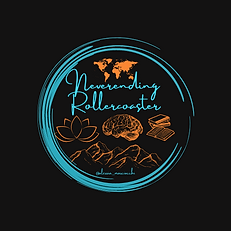Cluttered Mind – Attention and Distraction: A mindfulness-based approach
- Alessia Masciocchi
- Oct 13
- 3 min read
In today's frantic world, our minds seem to be constantly bombarded with stimuli, thoughts, and distractions. How can we find calm and focus again on this mental whirlwind? The answer may lie in mindfulness.
Awareness of the Present Moment
Being aware means much more than merely paying attention at a surface level. It's about deliberately channelling our attention inward, anchoring ourselves firmly in the present moment. The practice of mindfulness invites us to pause and observe with curiosity the sensations flowing through our bodies, the thoughts emerging in our minds, and the emotions that colour our experiences.
When distractions inevitably come—and they always will—the secret isn't to fight them, but to learn to let them go gently, like clouds passing across a clear sky.
The Mind – A Tool and a Landscape
Our mind can be understood through a dual metaphor: on one hand, it represents an incredibly powerful tool that we can learn to use with greater precision and control; on the other, it resembles a vast inner landscape, continuously traversed by currents of thoughts that flow like moving rivers.
Our thoughts are constant companions in our existence, but here lies the key: we can develop the ability to observe them without judgment, maintaining the position of an aware witness rather than being passive victims of our mental processes.
Mental Multitasking?
We often believe our mind is capable of simultaneously handling a multitude of different thoughts. However, the reality is more subtle: the mind can actually hold only one thought at a time. What we perceive as overlap is really a rapid succession of thoughts emerging from experience, creating the illusion of mental multitasking.
Thoughts and experiences, while maintaining their independence, interact continuously and dynamically, weaving the complex fabric of our inner life.
Consciously Choosing to Focus
In mindfulness practice, we reclaim a fundamental power: that of choice. We decide where to direct our attention, becoming active directors rather than passive spectators of our mental states.
This conscious direction of attention doesn't require eliminating disturbing thoughts or emotions: instead, the practice teaches us to recognise these elements without getting emotionally involved, maintaining a stable and centred presence.
The Metaphor of Ripples in Water
To better understand how our mind works, let's imagine a raindrop falling into a calm pond.
At the exact point where the drop touches the water's surface, we find our direct experience: the immediate sensations and authentic emotions we're experiencing.
From this point of contact, the first concentric circle is generated, representing our initial thoughts in response to the experience. But the process doesn't stop there: each circle generates the next one, moving ever further from the original center. These outer circles symbolise thoughts that arise from thoughts, creating associative chains that can lead us away from the simplicity of immediate experience.
Interrupting the Flow of Thoughts
As I explained with the metaphor, thoughts naturally tend to generate other thoughts, in a potentially infinite cascade. This is where mindfulness reveals its deepest value: through intentional focus on a single point of attention, we acquire the necessary tools to interrupt this otherwise incessant flow.
It's not about suppressing thoughts or judging them negatively, but developing the ability to recognise when we're being swept into mental spirals and consciously choosing to return to our anchor point in the present.
A More Peaceful Mind?
In an era characterised by hyperconnection and overstimulation, cultivating this capacity for conscious attention is no longer a luxury but a necessity for our psychological well-being. Mindfulness offers us a practical path to transform our cluttered minds into a space of greater clarity and inner peace.
The journey toward greater awareness begins with a single breath, a moment of presence, one choice at a time. In this way, we can learn to navigate with greater wisdom through the complex landscape of our mental life.








Comments